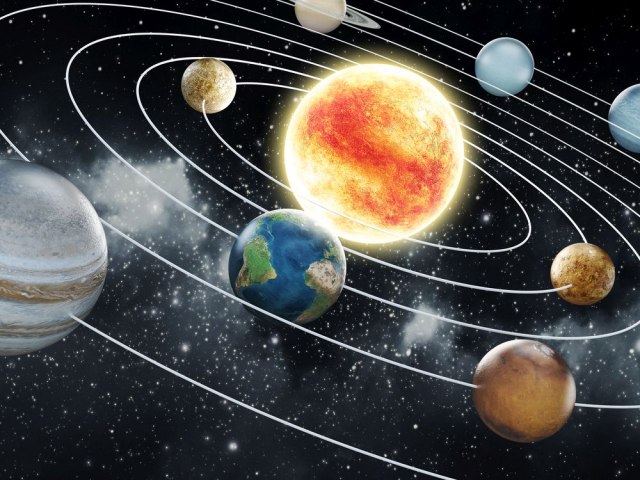
Two planets orbiting a tiny star 218 light-years away appear to be unlike any other in the Solar System. Exoplanets Kepler-138c and Kepler-138d have a radius about 1.5 times that of Earth and appear to consist of thick, steamy atmospheres and incredibly deep oceans.

“We used to think that planets slightly larger than Earth were really big balls of metal and rock, like scaled-down versions of our planet, and that’s why we called them super-Earths,”
said astronomer Björn Benneke of the University of Montreal.
“However, these two planets, Kepler-138c and d, appear to be quite different from that concept: a large fraction of their volume is probably water.” “This is the first time we have observed planets that we can confidently say are water worlds of sorts,” he added.
How the composition of exoplanets is determined
Determining what planets outside the solar system, i.e. exoplanets, are made of usually requires a lot of “detective” work. They are very far away and very faint compared to the light of the stars they orbit. It’s very difficult to get direct pictures, and if we do take them, we don’t see a lot of detail in them.
Therefore, the composition of an exoplanet is usually determined on the basis of its density, which is calculated using two parameters – the drop in the brightness of the star during the transit of the planet and the radial velocity of the star, i.e. the so-called oscillation, writes “Science Alert”.
The amount of light blocked during transit indicates the exoplanet’s size, and the star’s radial velocity indicates its mass. Namely, the radial velocity is induced by the gravitational effect of the exoplanet on the star, so the mass of the planet can be determined through this. And once you have the size and mass of the object, you can calculate its density.
What is the density of exoplanets
Gaseous worlds, such as Jupiter, will have a relatively low density, and rocky, metal-rich worlds will have a higher density. At 5.5 grams per cubic centimeter, Earth is the densest planet in the Solar System; Saturn has the lowest density – 0.69 grams per cubic centimeter.
Transit data show that Kepler-138c and Kepler-138d have radii that are 1.51 times that of Earth, and their gravitational pull is twice as massive as our planet.
This means that their density is about 3.6 grams per cubic centimeter; which is between the rocky and gaseous worlds in density. Jupiter’s moon Europa has a similar density (3 grams per cubic centimeter), which is thought to hide a huge ocean under its icy crust.

“Imagine larger versions of Europa or Enceladus, the water-rich moons that orbit Jupiter and Saturn, but are much closer to their star.” “Instead of an icy surface, Kepler-138c and d is surrounded by water vapor,”
said astrophysicist Carolyn Piaulet of the University of Montreal.
Supercritical fluid
According to the expert’s model, more than 50 percent of the volume of these exoplanets is water, which extends to a depth of about 2,000 kilometers. Earth’s oceans, by comparison, have an average depth of 3.7 kilometers.
Kepler-138c and Kepler-138d are much closer to their star than Earth is to the Sun, so they are much hotter. One orbits the red dwarf in 13 days, and the other in 23 days. This means that the oceans and atmospheres there look completely different than on Earth.
“The temperature in the atmospheres of Kepler-138c and Kepler-138d is probably above the boiling point of water, so there seems to be a very dense atmosphere made of steam.” Beneath such an atmosphere is potentially liquid water at high pressure or even water in a second phase that occurs at high pressures, called a supercritical fluid.”

Leave a comment